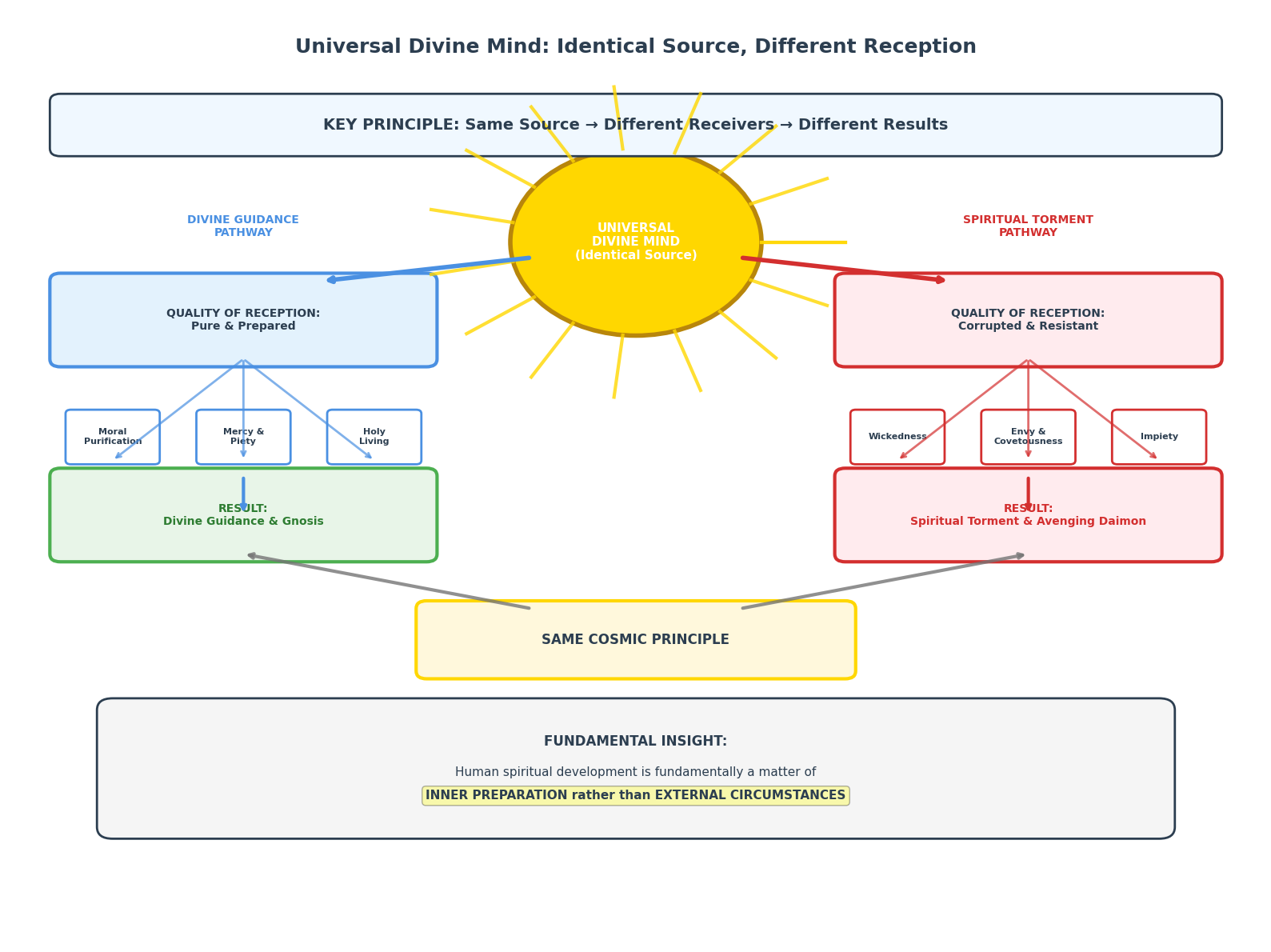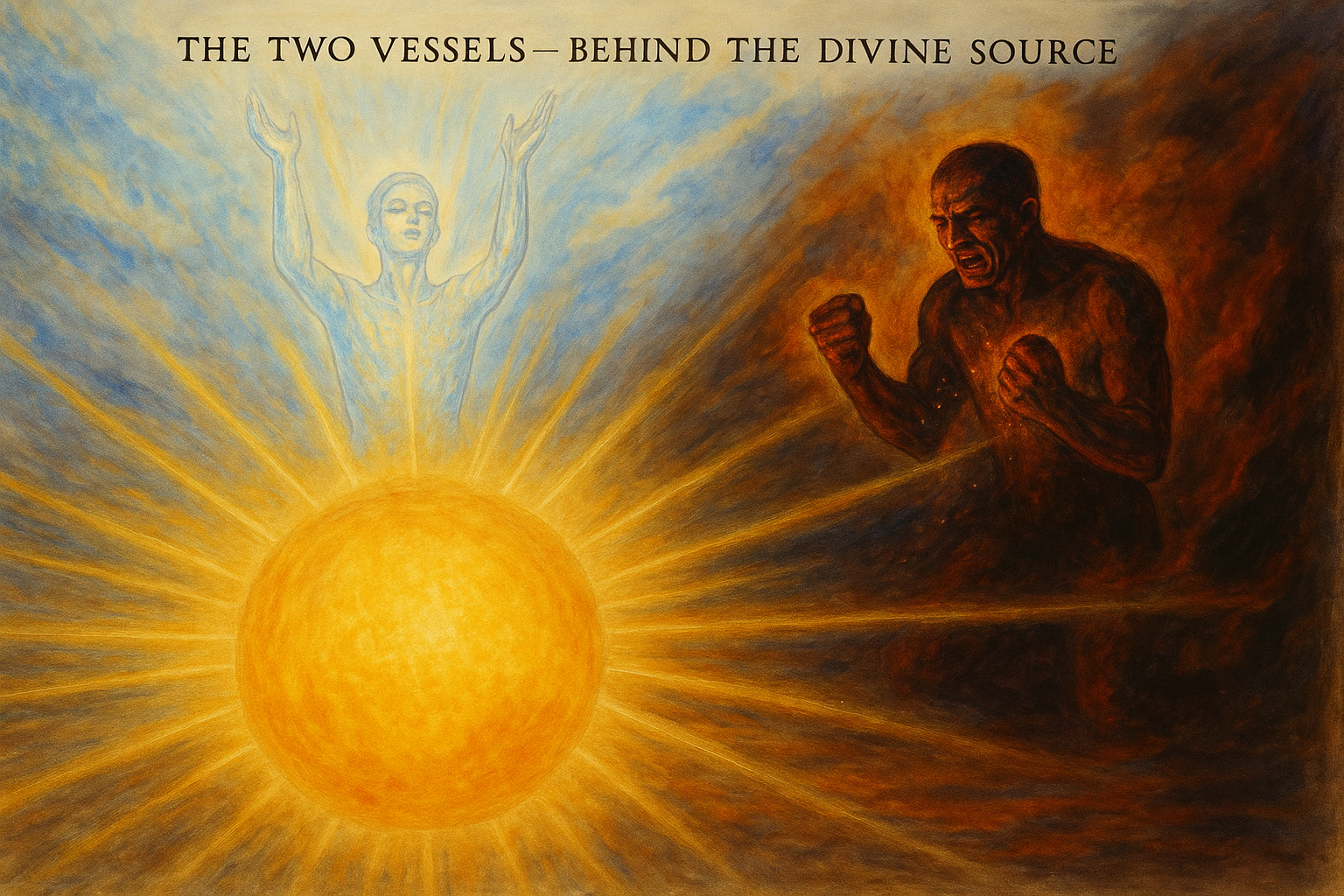The Universal Mind: Why All Have Access But Not All Receive
In the ancient Hermetic dialogue between the seeker and the divine Mind (Nous), a profound question emerges that has puzzled spiritual seekers for millennia: "Have not all men then Mind?"

The Universal Mind: Why All Have Access But Not All Receive
by Unknown
Introduction
In the ancient Hermetic dialogue between the seeker and the divine Mind (Nous), a profound question emerges that has puzzled spiritual seekers for millennia: "Have not all men then Mind?" This seemingly simple question opens the door to understanding one of the most fundamental concepts in Hermetic philosophy—the universal nature of divine consciousness and the mystery of why not all humans seem to benefit from its presence.
The answer provided by the divine Mind reveals a crucial distinction that transforms our understanding of spiritual development. The Mind responds that while it is indeed universal, its active presence and guidance are experienced only by those who have prepared themselves through purity, mercy, and holy living. This creates what we might call the "Universal Paradox"—a divine faculty that belongs to all humanity yet operates selectively based on individual spiritual condition.
The Core Teaching:
"I, Mind, myself am present with holy men and good, the pure and merciful, men who live piously. To such my presence doth become an aid, and straightway they gain gnosis of all things."
This teaching suggests that divine Mind operates like a radio frequency that is always broadcasting, but only those who have "tuned" their inner receivers through moral purification and spiritual practice can clearly receive its transmission. The Mind is not absent from the impure, but rather their spiritual "static"—generated by wickedness, envy, covetousness, and impiety—prevents clear reception.
Understanding this concept requires grasping three fundamental principles:
First, the Principle of Universal Presence: The divine Mind is omnipresent and available to all human beings without exception. It is not a privilege reserved for a chosen few, but rather a cosmic inheritance of every soul. This presence exists whether we recognize it or not, whether we access it or not.
Second, the Principle of Conditional Reception: While the Mind is universally present, its active guidance, wisdom, and transformative power can only be received by those who have cultivated the proper spiritual conditions. These conditions include moral purity, mercy toward others, piety, and a sincere love for the divine.
Third, the Principle of Contrary Opposition: For those who live in wickedness and spiritual darkness, the same universal field that offers divine guidance to the pure instead becomes a source of increased torment through what the text calls the "Avenging Daimon." This is not punishment from an external judge, but rather the natural consequence of trying to receive divine frequency through a corrupted receiver.
This teaching has profound implications for understanding human spiritual development. It suggests that the difference between the enlightened sage and the suffering sinner is not a matter of divine favoritism or predetermined fate, but rather the result of conscious choices about how to prepare one's inner vessel for divine reception.
Logical Diagram

Diagram Description: This logical breakdown illustrates how the same universal divine Mind produces entirely different results based on the spiritual condition of the receiver. The diagram emphasizes that the source is identical for all humans—what differs is the quality of reception, which determines whether one experiences divine guidance or spiritual torment. The arrows demonstrate that both outcomes stem from the same cosmic principle, making clear that human spiritual development is fundamentally a matter of inner preparation rather than external circumstances.
Artwork Description

Alternative Perspective: This second visualization presents the same concept from the perspective of the Universal Mind itself, allowing viewers to witness the divine emanation from the source's viewpoint. This unique viewpoint highlights our shared connection with the divine source, illustrating how the same brilliant golden light radiates outward to both vessels simultaneously. The perspective creates a more immersive understanding of the universal nature of divine availability while making the dramatic difference in reception even more striking when viewed from this cosmic vantage point.
Artwork Concept: This visual metaphor conveys the essential teaching by depicting two vessels receiving the same divine light with dramatically different outcomes. The crystalline vessel represents the purified soul that allows divine Mind to flow through unobstructed, resulting in illumination and peace. The dense vessel represents the corrupted soul that creates resistance to the same divine influence, resulting in internal conflict and suffering. The identical source and ground emphasize the universal nature of divine availability, while the different vessel qualities illustrate why reception varies so dramatically between individuals.
The artwork would use the contrast between transparency and opacity, harmony and discord, flow and resistance to make the abstract teaching tangible and immediately understandable. Viewers would intuitively grasp that the difference lies not in what is offered, but in how it is received.
Conclusion
The Hermetic teaching "Have not all men then Mind?" reveals one of the most important principles for understanding human spiritual development. The answer—that divine Mind is universally present but selectively received—transforms how we approach both personal growth and our understanding of others' spiritual conditions.
This concept carries several crucial insights for modern seekers:
Personal Responsibility: Spiritual development is not a matter of waiting for divine grace to descend arbitrarily, but rather of preparing oneself to receive what is already constantly available. The work lies in purification, in cultivating mercy, piety, and genuine love for the divine.
Universal Hope: No human being is permanently cut off from divine guidance. The same Mind that illuminates the saint is present with the sinner, waiting for the proper conditions to manifest its transformative power. This means that spiritual awakening is always possible, regardless of past mistakes or current circumstances.
Understanding Suffering: The teaching explains why some people seem to experience increased turmoil when exposed to spiritual teachings or practices. It is not that the divine is punishing them, but rather that their inner condition creates friction with divine influence until proper purification occurs.
Practical Application: The path forward becomes clear—focus on moral purification, cultivate mercy toward others, develop genuine piety, and maintain sincere love for the divine. These are not arbitrary religious requirements but practical steps for improving one's capacity to receive divine guidance.
Perhaps most importantly, this teaching reveals that the spiritual journey is ultimately about becoming a proper vessel for what is already present. The Universal Mind is not something we must earn or achieve—it is something we must learn to receive. In this understanding lies both the challenge and the promise of human spiritual development: that the highest divine wisdom is always available, waiting for us to create the inner conditions necessary for its clear reception.
This ancient wisdom remains as relevant today as when it was first recorded, offering both explanation for the diversity of human spiritual experience and practical guidance for those seeking to deepen their connection with the divine source of all wisdom and understanding.
